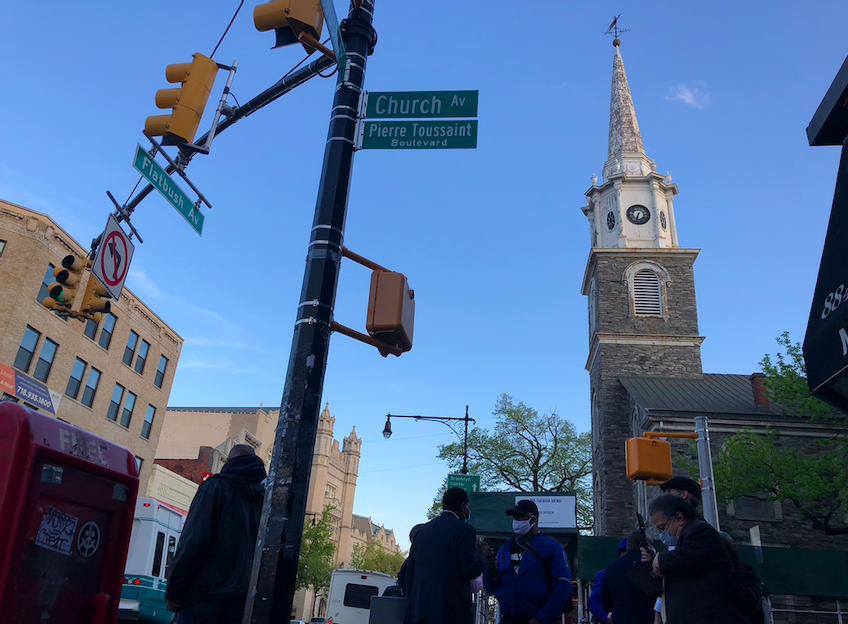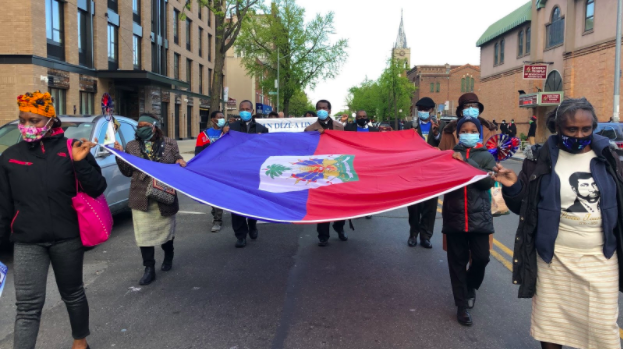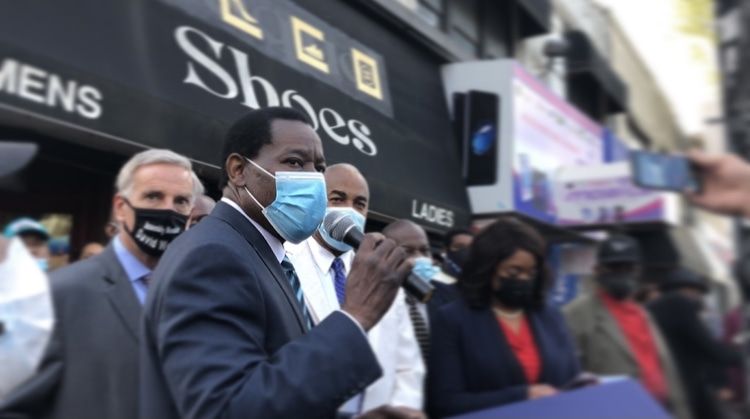Church Avenue is Now Also Known as Pierre Toussaint Boulevard


From Nostrand and Coney Island Ave, Church Avenue was co-named Pierre Toussaint Boulevard on Sunday, Apr. 25, 2021. The co-naming ceremony started with a prayer at the Holy Cross Roman Catholic Church parking lot on Church Ave, followed by a procession from the Church to the intersection of Flatbush and Church avenues.
Pierre Toussaint was brought to New York as a slave from Haiti in 1787. As a slave, Pierre Toussaint took care of his Mistress by earning as a hairdresser after his master’s death.
Pierre, following his freedom, adopted the surname Toussaint – the name of the famous Haitian Revolutionary, Toussaint Louverture.
Pierre Toussaint became a free man in 1807 following the death of his mistress and he worked to free many other slaves and helped orphanages house homeless orphans. Toussaint was a famous hairdresser and founder of Catholic Charities New York.
Haitian Americans were the first slaves to revolt against slavery in the United States, and Haiti is the first country to gain their freedom from European colonization.
Councilmember Mathieu Eugene, who is Haitian and represents 40th Council District, remarked that “if Pierrie Toussaint made it” as a slave, “we Haitian people right now we don’t have to complain” but work hard and move forward.
“Today, we are here to pay tribute to his [Pierre Toussaint] life, to his contribution, his achievement, to what he have done for people, for the children of God,” he said.

Senator Chuck Schumer, who was present during the prayer ceremony, said that Pierre Toussaint embodied what it means to be an American and a New Yorker.
“It’s great to be here with everybody. Today I want to celebrate the beautiful life of Pierre Toussaint and the contributions of the Haitian-American community here in Brooklyn and in New York. He lived his life in service to others, improving his community even in the face of enslavement and discrimination, and bigotry.”
“I am honored to be here on behalf of the mayor as well as a representative of the City of New York,” said Maggie Osten, Senior Advisor to Mayor Bill de Blasio. Osten called herself the “daughter of Haiti” and said that she was grateful to the Haitian community for taking in people that come to the U.S.A. “in search of a better life,” as her family did about 55 years ago.
“Pierre Toussaint is such an important figure for Haitians here in New York City as well as back home in Haiti. His philanthropy and accomplishments are nothing short of amazing when you consider that he came here as a slave.”

Marie T. Pyrol, 83, who lives on Flatbush Avenue and Caton Avenue, a block away from Church Ave, said that Pierre Toussaint was a “very brave young man.” Pyrol immigrated to the states almost 50 years ago with her family from Haiti. She said that co-naming a street after Pierre Toussiant will not end racism in America.
“America is America. America is not going to change” she said, but “they let us put it [pointed at the street name Pierre Toussaint Boulevard next to Church Ave], that’s the best part.”





